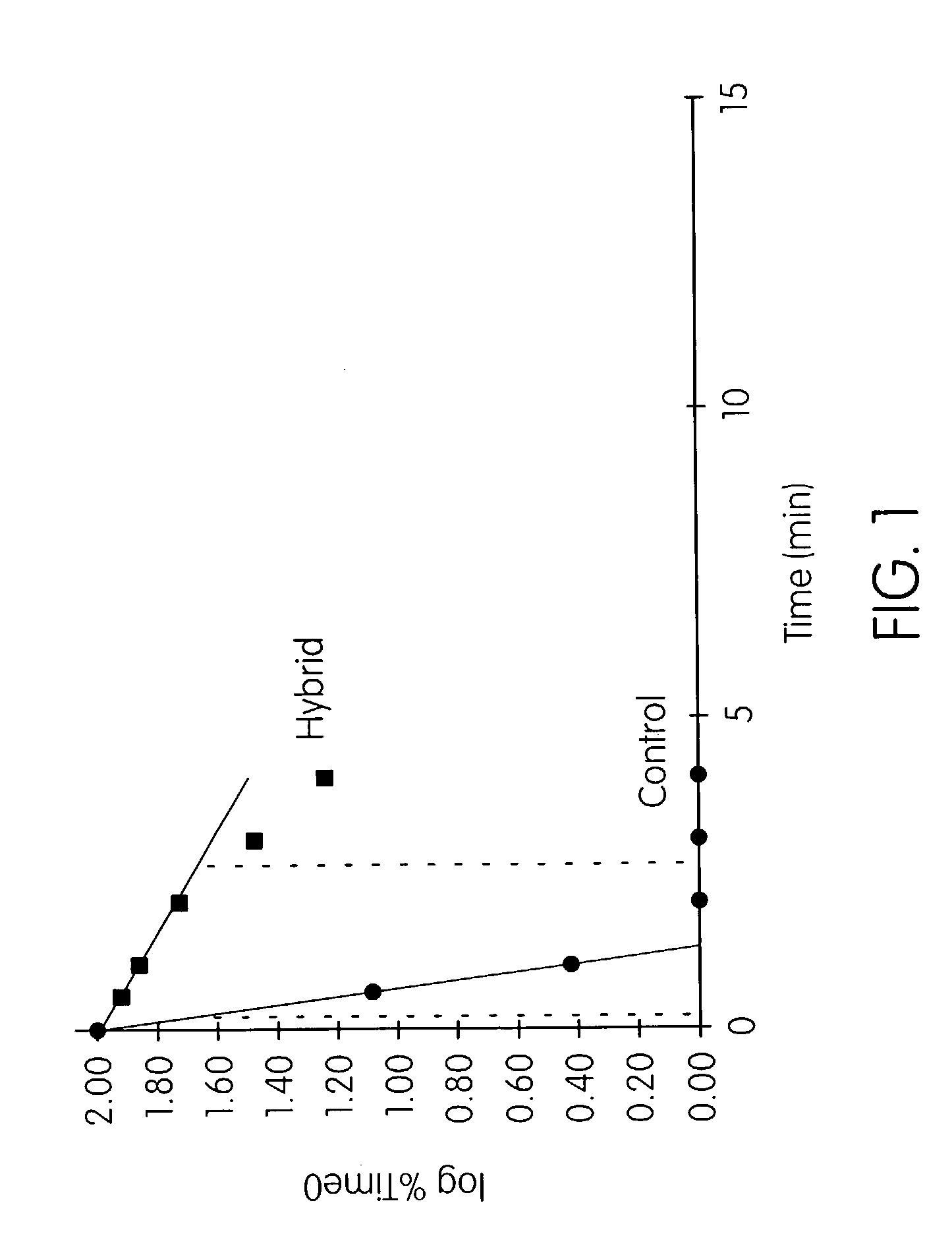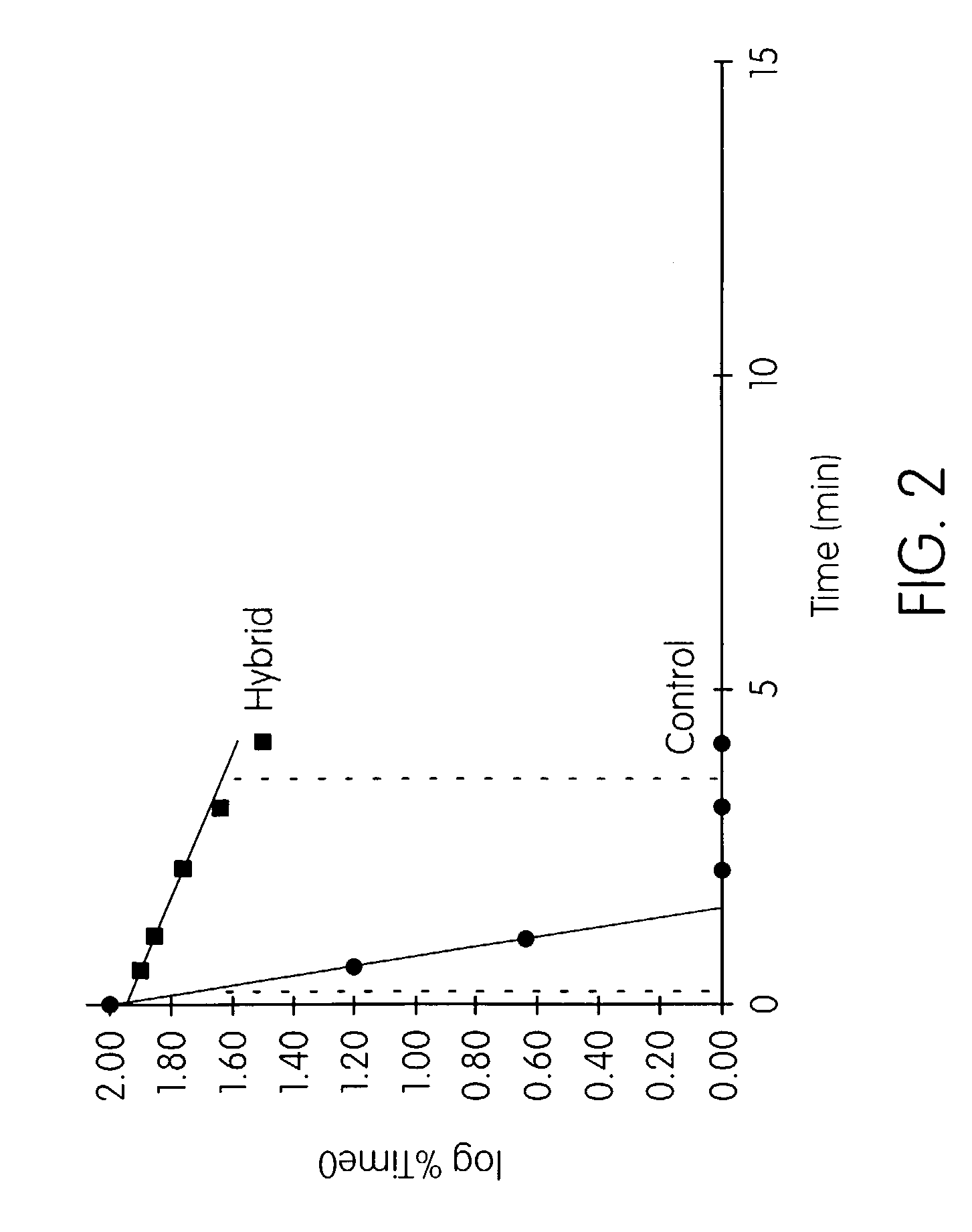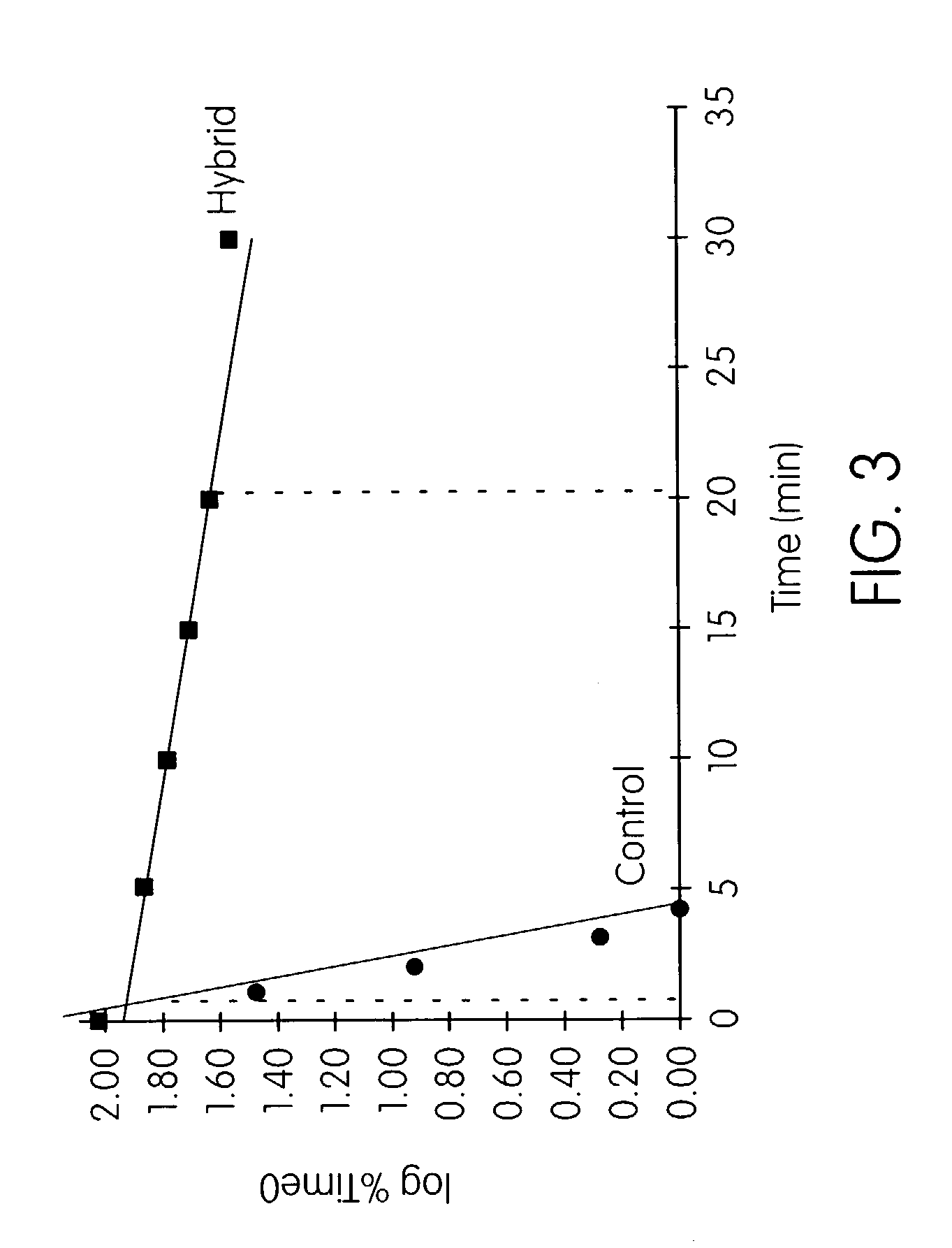Probes, compositions and kits for determining the presence of Mycoplasma genitalium in a test sample
a technology of mycoplasma genitalium and probes, applied in the field of hybridization assay probes and capture probes, can solve the problems of crowded military populations, camps and schools, etc., and reducing the symptomatic period. unnecessarily prolonging the symptomatic period
- Summary
- Abstract
- Description
- Claims
- Application Information
AI Technical Summary
Benefits of technology
Problems solved by technology
Method used
Image
Examples
example 1
M. pneumoniae Probes Exhibiting Improved Differential Hydrolysis Properties
[0249]This example illustrates hybridization assay probes for M. pneumoniae 16S rRNA which appear to exhibit improved differential hydrolysis properties over a prior art probe disclosed by Hammond et al., “Nucleic Acid Hybridization Assay Probes, Helper Probes and Amplification Oligonucleotides Targeted to M. pneumoniae Nucleic Acid,” U.S. Pat. No. 5,656,427. Hybridization assay probes of the present invention which were used in this example had the nucleotide sequence of SEQ ID NO:1 and were synthesized, as described above, to include a non-nucleotide linker positioned either between nucleotides 14 and 15 (“Probe 1”) or between nucleotides 16 and 17 (“Probe 2”), when reading 5′ to 3′. The Hammond probe (“Probe 3”) had the nucleotide base sequence of SEQ ID NO:42 gcattggaaactattaatctagagtgtg and were synthesized, as described above, to include a non-nucleotide linker between nucleotides 17 and 18 (reading 5′ ...
example 2
Comparison of Differential Hydrolysis Ratios for M. pneumoniae Probes
[0254]This example compares the differential hydrolysis ratios of two Hammond probes and two probes according to the present invention. The Hammond probes were Probe 3 of Example 1 above and a probe which shared the nucleotide sequence Probe 3 but included a non-nucleotide linker positioned between nucleotides 15 and 16 (“Probe 4”), when reading 5′ to 3′. The two probes according to the present invention were Probes 1 and 2 of Example 1 above. While Probes 1 and 2 and Probes 3 and 4 were studied in separate experiments, the descriptions and results of these separate experiments are presented together in this example to facilitate comparisons. All four probes used were labeled with a chemiluminescent acridinium ester, as described above in the section entitled “Preparation of Oligonucleotides.”
[0255]Probes 3 and 4 were studied in the first experiment. In this experiment, four 12×75 mm polypropylene tubes (Gen-Probe ...
example 3
Amplification and Detection of M. pneumoniae Nucleic Acid
[0274]This example illustrates the amplification of a target sequence of M. pneumoniae nucleic acid and detection of amplified rRNA using a hybridization assay probe specific for M. pneumoniae-derived nucleic acid. In particular, a M. pneumoniae hybridization assay probe having the base sequence of SEQ ID NO:42 was synthesized, as described above, to include a non-nucleotide linker positioned between nucleotides 15 and 16, when reading 5′ to 3′. This hybridization assay probe was of the same sense as the M. pneumoniae target rRNA and was used to detect product of six different transcription-mediated amplifications.
[0275]Transcripts were generated from 16S rRNA sequences obtained from M. pneumoniae (ATCC Accession No. 15531) and separately amplified using different sets of primers and promoter-primers. The primer / promoter-primer combinations used in these amplification reactions were as follows: (i) a promoter-primer having a 5...
PUM
| Property | Measurement | Unit |
|---|---|---|
| genome size | aaaaa | aaaaa |
| elongation | aaaaa | aaaaa |
| melting temperature | aaaaa | aaaaa |
Abstract
Description
Claims
Application Information
 Login to View More
Login to View More - R&D
- Intellectual Property
- Life Sciences
- Materials
- Tech Scout
- Unparalleled Data Quality
- Higher Quality Content
- 60% Fewer Hallucinations
Browse by: Latest US Patents, China's latest patents, Technical Efficacy Thesaurus, Application Domain, Technology Topic, Popular Technical Reports.
© 2025 PatSnap. All rights reserved.Legal|Privacy policy|Modern Slavery Act Transparency Statement|Sitemap|About US| Contact US: help@patsnap.com



